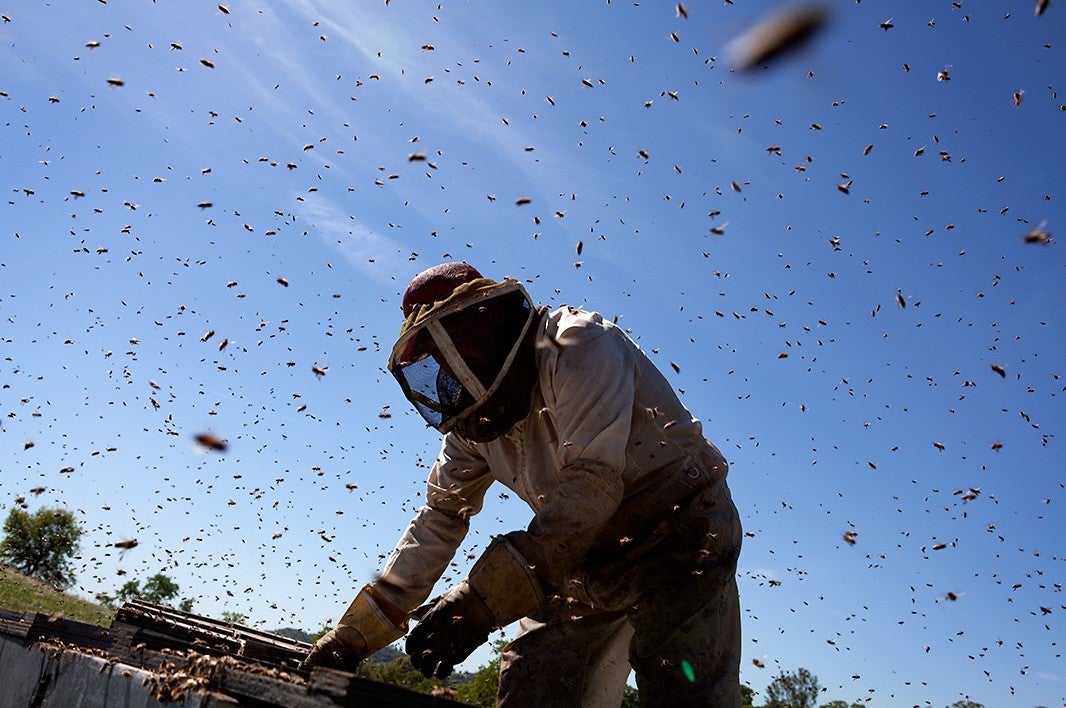Bee-Killing Insecticide Sulfoxaflor To Remain Off Shelves in California
Victory
—Court of Appeal lets stand lower court’s decision invalidating California's approval of insecticide that causes colony collapse
Contact
In an unpublished opinion last week, the California Court of Appeal dismissed appeals of a 2021 decision tossing out California’s approval of sulfoxaflor. This makes the lower court’s judgment the final word in the case and upholds commercial beekeepers’ winning challenge against the California Department of Pesticide Regulation’s decision to approve the pollinator-killing insecticide sulfoxaflor for use in California.
Sulfoxaflor is an insecticide linked to nation-wide honey bee die-offs and for killing other pollinators too, including the seriously imperiled monarch butterfly that migrates through California every year.
“This decision from the Court of Appeal ensures pollinators will not suffer exposure to yet another toxic systemic insecticide in California,” said Steve Ellis, president of Pollinator Stewardship Council. “Since almost 90 percent of all U.S. honey bee colonies spend at least some portion of the year in California, what happens in California is especially important for the beekeepers.”
“The Court of Appeals stood up for food security, the economy and the beekeepers by maintaining a good decision: dangerous pesticides like sulfoxaflor do more harm than good and shouldn’t be sold in California,” said Greg Loarie, Earthjustice attorney. “Research shows that pesticides like sulfoxaflor are a big contributor to massive pollinator die-offs over the last few years. Keeping a bee-killing pesticide out of California ensures the long term health of our food supply and pollinators.”
Background
Pollinators’ ecological service in the country is valued at $200 billion a year, according to government data, and more than 80 percent of plants worldwide need pollinators to survive. From April 2020 to April 2021, US beekeepers lost 45.5% of their colonies. This is the second-highest loss on record.
Touted as a “next generation neonicotinoid,” sulfoxaflor is like other bee-killing neonicotinoid insecticide: it is systemic, meaning the growing plant absorbs it, making it toxic to insects for days thereafter. When foraging, honey bees bring back to the hive pollen and nectar tainted with sulfoxaflor, which poisons the entire colony.
EPA first approved sulfoxaflor in 2013, but thanks to a lawsuit brought by Pollinator Stewardship Council, the American Beekeeper Federation, all represented by Earthjustice, the Ninth Circuit Court of Appeals overturned that decision. The Court ruled EPA failed to obtain reliable studies on the impacts of sulfoxaflor on honey bee colonies.
In December 2021, a California judge ruled that sulfoxaflor approval violated state environmental law, requiring the state to reconsider its use in one of the largest agricultural states in the country.
Sulfoxaflor is produced by Corteva, formerly Dow AgroSciences.
Earthjustice represented the Pollinator Stewardship Council and the American Beekeeper Federation.

Additional Resources
About Earthjustice
Earthjustice is the premier nonprofit environmental law organization. We wield the power of law and the strength of partnership to protect people's health, to preserve magnificent places and wildlife, to advance clean energy, and to combat climate change. We are here because the earth needs a good lawyer.